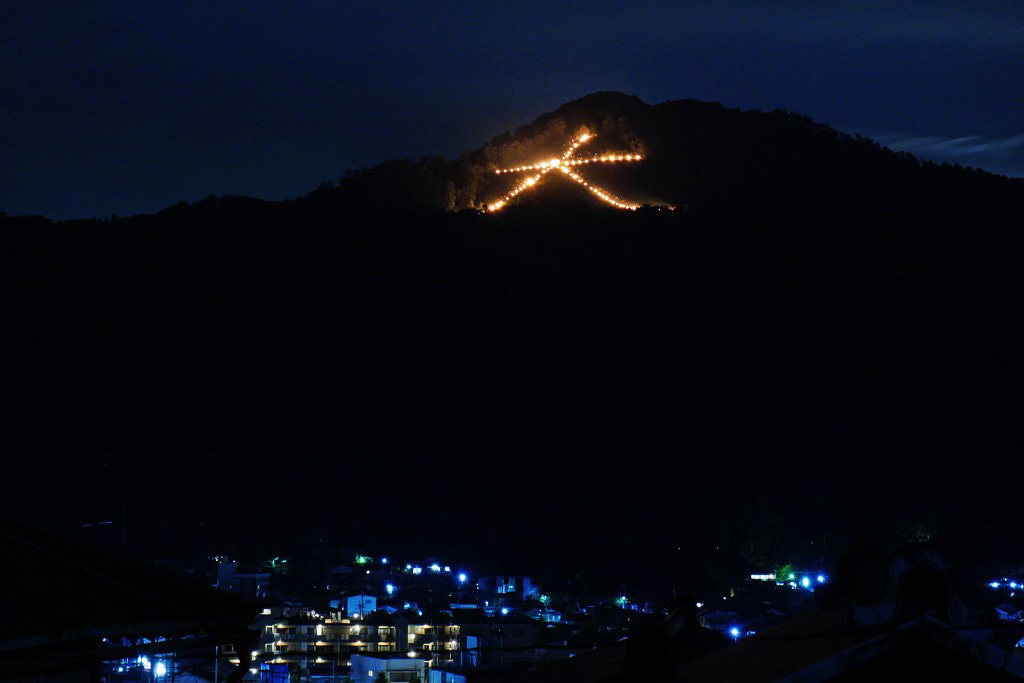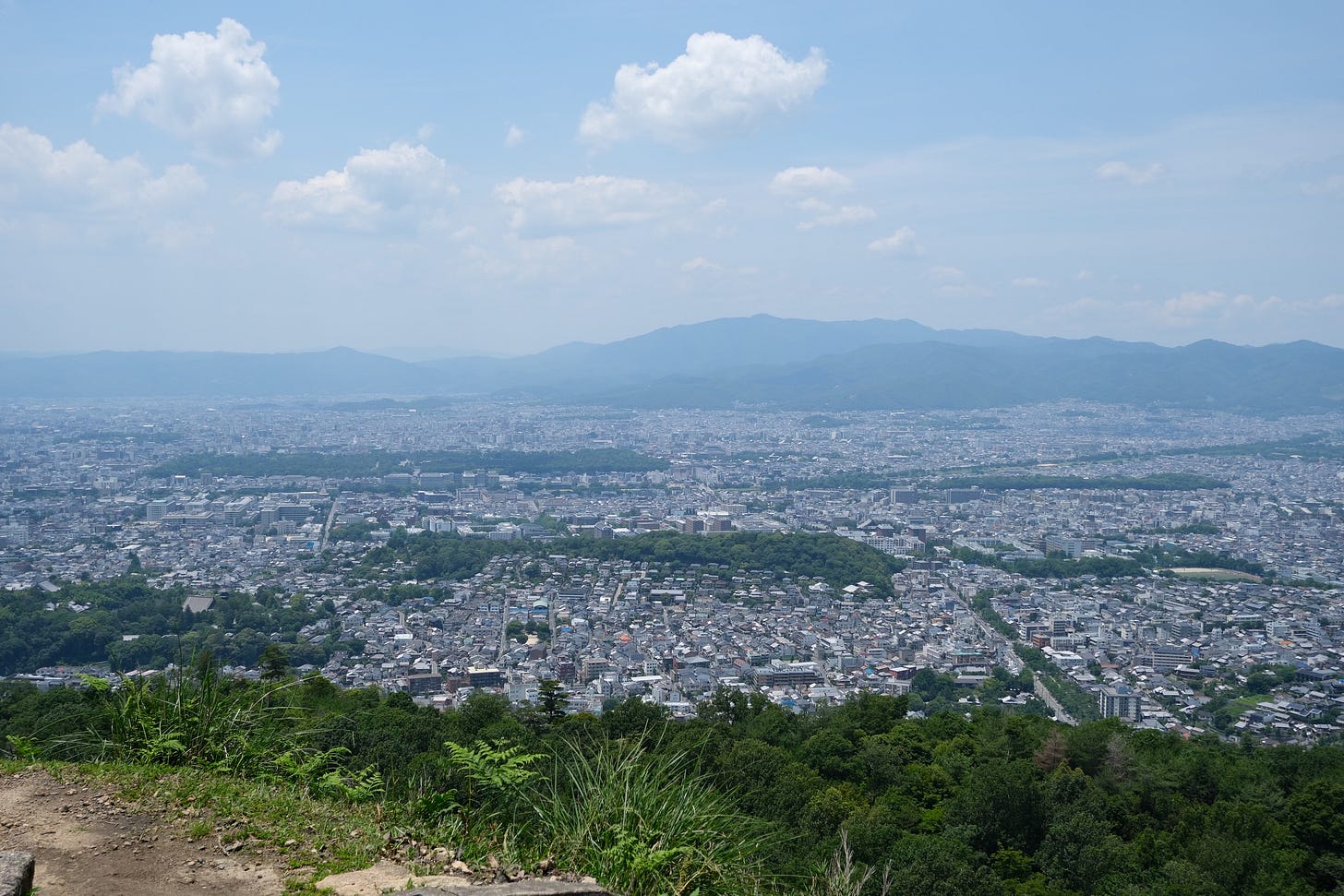Just behind Kyoto’s famous Ginkaku-ji Temple lies Mount Daimonji, a sacred peak offering one of the city’s most breathtaking views—an expanse of natural serenity standing in sharp contrast to the bustling urban life below. In this article, I’ll guide you through its history, cultural significance, and hiking routes (just 20 minutes to the main viewpoint from Ginkaku-ji).
1. What Is a Sacred Mountain in Japan?
In Japan, a reizan (sacred mountain) is believed to possess spiritual energy. Such mountains have long served as places of worship, pilgrimage, and ascetic training. Japan’s tradition of mountain worship blends ancient animism, Buddhism, and Shugendō—a syncretic religion combining Buddhism, Shintoism, and Taoism. Mount Daimonji, located behind Ginkaku-ji (Jishō-ji), is one such mountain that commands both religious reverence and cultural respect.
2. A Mountain Steeped in History
Many travelers visit Ginkaku-ji, yet few realize that just behind it lies a mountain rich in historical significance. During the Sengoku period (Warring States era), this area was home to Nakao Castle, where fierce battles unfolded between Ashikaga Yoshiharu (the 12th shogun of the Muromachi Shogunate) and the powerful warlord Miyoshi Nagayoshi.
These conflicts symbolize the decline of centralized shogunate control and the rise of regional powers. Today, the quiet ruins of Nakao Castle remain nestled in the forest, silently whispering stories of Japan’s turbulent past.
“Climbing Mount Daimonji means walking on the very soil once trodden by samurai warriors.”
3. Gozan no Okuribi: The Mountain Ablaze
Every year on August 16, Kyoto hosts the Gozan no Okuribi, or “Five Mountain Send-Off Fires,” a spiritual event marking the end of Obon—the festival where ancestral spirits return home.
To send these spirits back to the afterlife, five massive bonfires in the shape of characters or symbols are lit on mountains around the city. The most famous of these is the "大" (Dai) character on Mount Daimonji. It can be seen from many places across Kyoto and is a profound expression of gratitude to ancestors and the impermanence of summer.
Even when the fires aren’t lit, visiting the hidoko (fire platform) evokes a sense of awe and sacredness.
4. Why You Should Hike Mount Daimonji
From behind Ginkaku-ji, a well-marked trail takes just 25 minutes to reach the fire platform. This spot, where the massive "大" is lit during the ceremony, offers panoramic views of the city. In autumn, the city is blanketed in brilliant reds and oranges—a view that can literally take your breath away.
At dusk, the sky glows with gold and violet hues. Looking out over a quiet Kyoto from above becomes a moment of rare, almost spiritual tranquility. This is a Kyoto far from the crowds, surrounded by silence and nature.
Surprisingly, there are over 30 different hiking routes on Mount Daimonji. Some lead to the ruins of Nakao Castle, others to hidden waterfalls or unknown autumn foliage spots—most of them rarely visited, even by locals. Unlike other tourist hotspots, these places offer total immersion in nature and history, free of charge and without the crowds.







